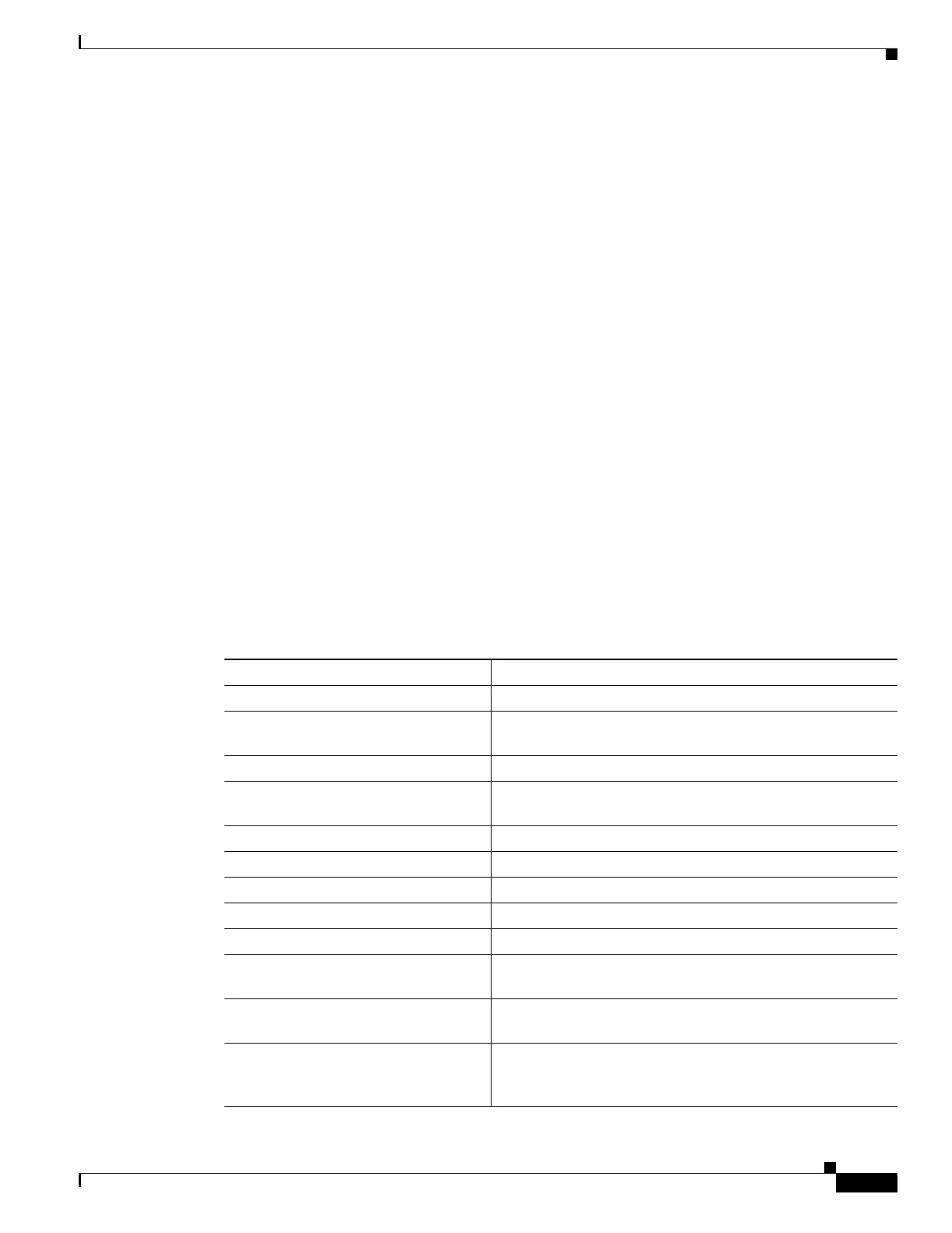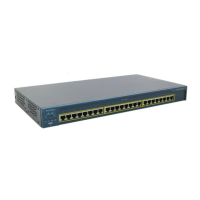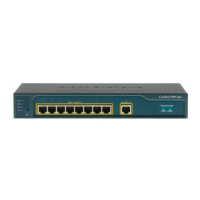10-9
Catalyst 2950 and Catalyst 2955 Switch Software Configuration Guide
78-11380-12
Chapter 10 Configuring Interface Characteristics
Configuring Ethernet Interfaces
Configuring Ethernet Interfaces
The switch supports these interface types:
• Physical ports—Switch ports, including access and trunk ports
• Port channels—EtherChannel of interfaces
• VLANs
These sections describe the default interface configuration and the optional features that you can
configure on most physical interfaces:
• Default Ethernet Interface Configuration, page 10-9
• Configuring Interface Speed and Duplex Mode, page 10-10
• Configuring Media Types for Gigabit Ethernet Interfaces on LRE Switches, page 10-13
• Configuring IEEE 802.3z Flow Control on Gigabit Ethernet Ports, page 10-13
• Adding a Description for an Interface, page 10-15
• Configuring Loopback Detection, page 10-15
Default Ethernet Interface Configuration
Table 10-1 shows the Ethernet interface default configuration. For more details on the VLAN parameters
listed in the table, see Chapter 16, “Configuring VLANs.” For details on controlling traffic to the port,
see Chapter 21, “Configuring Port-Based Traffic Control.”
Table 10-1 Default Ethernet Interface Configuration
Feature Default Setting
Operating mode Layer 2.
Allowed VLAN range VLANs 1 to 1005 with the SI installed or 1 to 4094 with the
EI installed.
Default VLAN (for access ports) VLAN 1.
Native VLAN (for IEEE 802.1Q
trunks)
VLAN 1.
VLAN trunking Switchport mode dynamic desirable (supports DTP).
Port enable state All ports are enabled.
Port description None defined.
Speed Autonegotiate.
Duplex mode Autonegotiate.
Flow control Flow control is set to off for receive and desired for send for
Gigabit Ethernet ports.
EtherChannel (PAgP) and Link
Aggregation Control Protocol (LACP)
Disabled on all Ethernet ports. See Chapter 30, “Configuring
EtherChannels.”
Port blocking—unknown multicast and
unknown unicast traffic (Catalyst 2950
LRE switches only)
Disabled (not blocked). See the “Configuring Port Blocking”
section on page 21-5.

